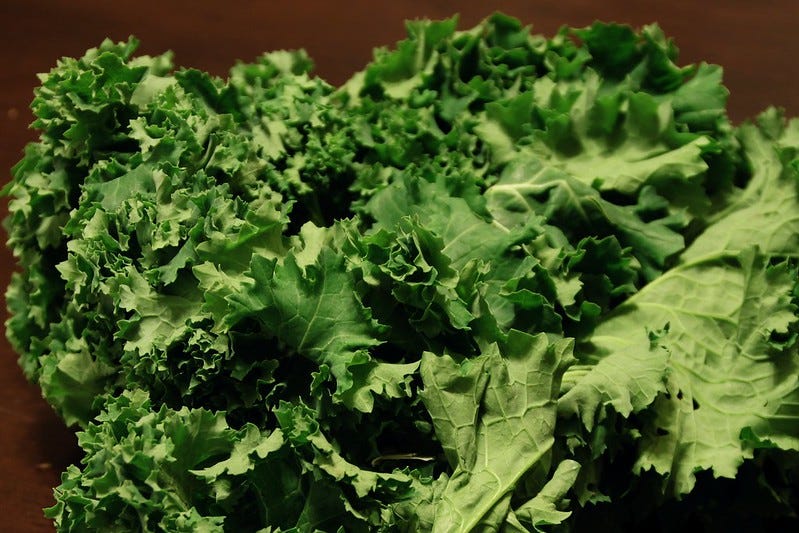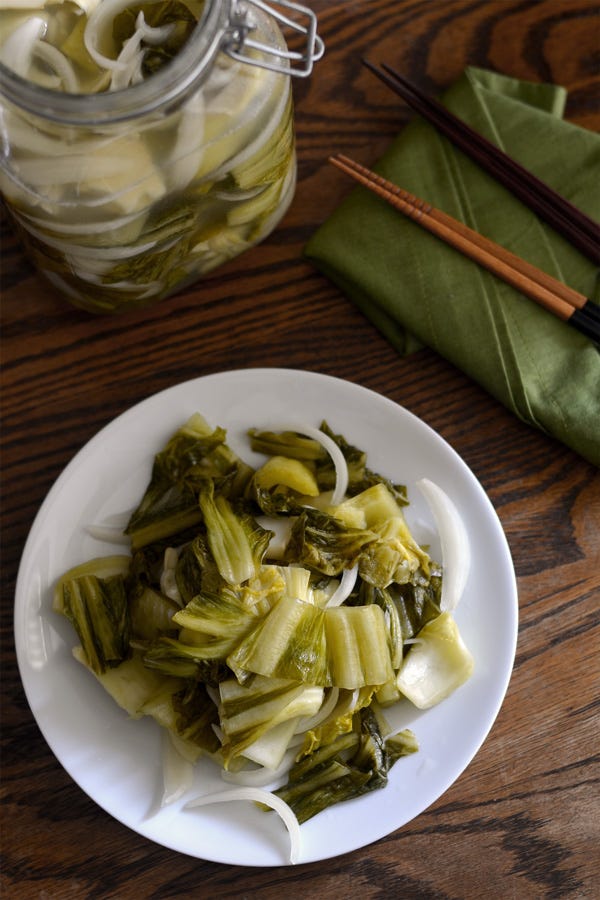Field guide: Mustard greens
A N.C. startup has "disarmed the mustard bomb." How about y'all just eat your damn greens?

I’ll start with an apology: it’s a bad time to celebrate the beauty of the mustard green, since this is a plant that doesn’t cotton to heat above 75 degrees.
But—in an unusual occurrence—mustard greens have hit the news. A North Carolina startup called Pairwise has released a CRISPRed version of this plant that has been updated to test like, of all things, lettuce.
“We basically created a new category of salad,” Pairwise’s CEO told WIRED. The company calls these “Conscious Greens.”1
If you missed the headlines, perhaps that’s because this is a rather underwhelming accomplishment?
I’ve been wading into the world of biotech lately, for a forthcoming story in MIT Technology Review on transgenic climate-saving “supertrees.” (As I’ve noted before, these trees were first planted in the South.) So I’ll save a deep dive into the ethics of genetic technology for a later date. The brief version: I don’t think GMOs are, like, some apocalyptic threat, or inherently dangerous. But I also think that whenever we tinker with our fellow species, we should have a damn good reason.
In a paper last year, the scientists behind this project claimed to have “demonstrated the efficacy of disarming the ‘mustard bomb’ reaction in reducing pungency upon the mastication of fresh tissue.” In other words: when you chew these leaves, you won’t suffer any unpleasant smells.
I appreciate, at least, that the scientists wedged the phrase “mustard bomb” into an otherwise exhausting assault of academese. Though personally I’ve never heard of this so-called mustard bomb.
Are mustard greens the most piquant of the greens? Sure. That’s what’s so great about them: that bit of peppery burst.
“Mustard greens” isn’t a scientific term, really. There are several species of mustard out there; brown, white, and black are among the most common, and I’ve found historical references to the greens of all three being consumed in the U.S.

Pairwise, though, is focused on brown mustard—Brassica juncea—which, speaking globally, is the form of mustard most often grown for its greens. (Though it’s grown for its seeds, too: if you’re a fan of spicy brown or Dijon mustard, you have B. juncea to that little burst of flavor.)
Southerners don’t seem picky about what greens they eat: the entry in The New Encylopedia of Southern Culture notes almost fifty varieties consumed in the regions—beet tops, dandelion greens, purslane, crow’s foot, wild tung grass, Uncle Simpson’s lettice, etc., etc., etc. Some are native; some were imported, potentially by enslaved Africans.
In some ways, there’s nothing particularly Southern about mustard greens. B. juncea was first domesticated in China, most likely, and it’s grown in gardens across the U.S. (As far as I can tell, there is very little large-scale commercial mustard green production in the U.S.) Greens boiled with pork was a familiar dish two thousand years ago in Rome, and later in Britain. In Africa, meanwhile, greens were often cooked with fish—but, far more so than in Europe, could be considered the star of the plate. Elements of these traditions combined in the South, thanks to Black cooks, helping turn greens into a symbol of the region.
Pairwise claims to be “breaking down the barriers that keep people from eating produce.” The idea, I guess, is to turn mustard greens into a healthier form of lettuce—something bland enough to be eaten raw. The scientists, in their paper, suggest that “consumers often cook down the leafy greens to soften tissues and alter flavor/odor profiles with the incorporation of fats and other ingredients.” Sure, maybe all the salt and pork fat ain’t great for my heart, but I’d guess that most people who need to eat more produce aren’t eating wolfing down endless heads of lettuce. You’re turning one veggie they don’t like into another veggie they don’t like. And you’re probably losing some greens fans along the way: Adrian Miller, in his excellent book Soul Food, notes that the bitterness of greens was part of their desired effect in sub-Saharan African cuisine.
Pairwise has future plans for seedless blackberries and pitless cherries. Huzzah. How deeply American. Maybe the better trick would be getting people to fall in love with the deliciousness that’s already here in the world.
The first batch of these “Conscious Greens” is not available, I note, in the South: according to WIRED, they’ll be served in restaurants around Minneapolis, St. Louis, and Springfield, Massachusetts, and available for purchase in Pacific Northwestern grocery stores.
Sometimes I think it can be a mistake to be beholden to tradition. I’ve come around to the fact that we can’t keep eating beef all the time—even if that means certain grand traditions, like, say delicious delicious brisket, will have to be retired. But when I want lettuce, I’ll eat lettuce. And when I want greens, I’ll eat ‘em stewed with plenty of bacon grease.
Get your greens
In High on the Hog, the peerless scholar Jessica B. Harris offers her grandmother’s greens recipe. Not that greens must feature pork; Miller, in Soul Food, notes that smoked turkey can accomplish a similar effect, and I’m sure there are successful efforts to veganize this classic dish. Still, don’t tell me a salad sounds more appealing than this.
4 pounds mixed greens (collard, mustard, turnip) 8 strips of bacon 6 cups water Salt and pepper (to taste)
Thoroughly wash the greens, discarding any yellowed or blemished leaves. Remove the stems and tear the greens into bite-sized pieces.
Cook the bacon in a large, heavy saucepan over medium heat until it’s coated in rendered fat. And the greens and water; at the same heat, bring the mxiture to a boil. Reduce to low and simmer, covered, about two hours. Taste and add salt and pepper. Serve with hot sauce, chopped onions, and balsamic vineger.
Interestingly, these “Conscious Greens” are not, per FDA definitions, considered a genetically modified organism; the company has not inserted any foreign genes, but instead, as I understand it, just turned off the genes responsible for making mustard greens taste like themselves.




